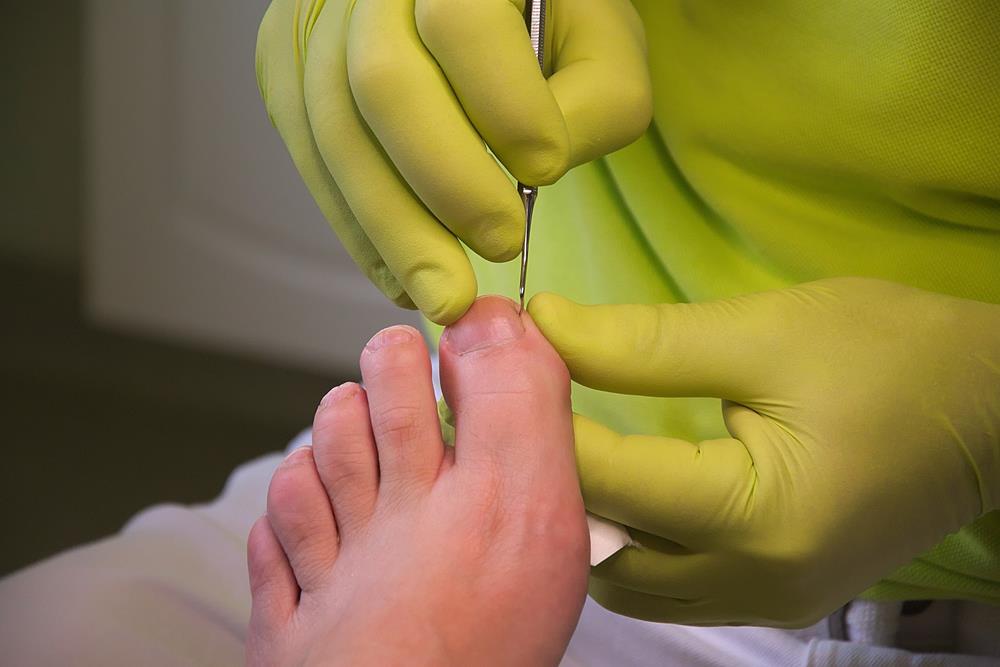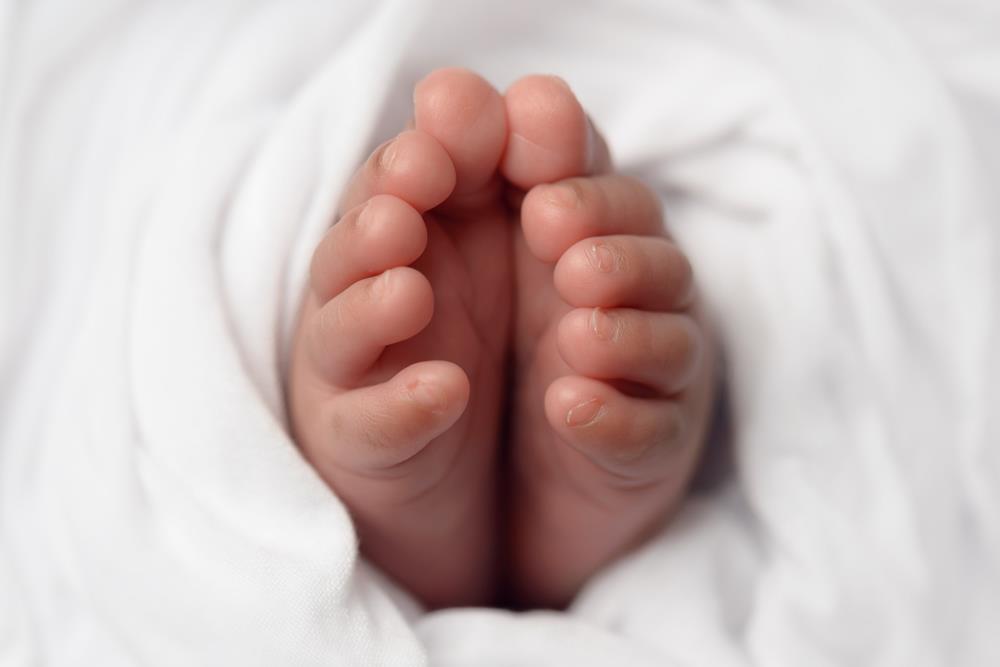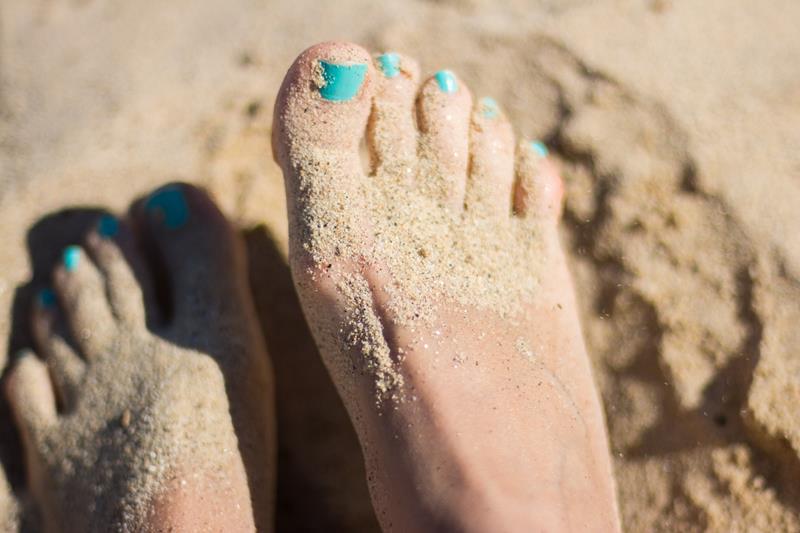
Luckily, we are highly skilled in treating a variety of conditions and issues. Whether you have slight discomfort or severe pain, we can provide you with care that allows you to live the lifestyle you want!
These are just some of the conditions, treatments, and services you will find at our podiatric office. Just ask us if you have any questions!
- Athlete’s Foot
- Heel Spurs/Plantar Fasciitis
- Ingrown Toenails
- Wound Care
- Diabetic Foot Care
- Bunions
- Hammertoes
- Flat Feet
- Shin Splints
- Pediatric Foot Conditions
- Peripheral Neuropathy
- Toenail Fungus
- Tailor’s Bunions
- Foot Surgery
- Eczema, Psoriasis
- Ulcers
- Biomechanical Issues
- Cavus Feet
- Pigeon Toes
- Nerve Pain, Nerve Entrapment
- Infections of the Skin, Soft Tissue and Bone

Athlete’s Foot
Athlete’s foot (tinea pedis) is a specific type of fungal infection that typically begins between the toes. A common cause of athlete’s foot is sweaty feet that are confined to tight shoes for a long period of time. Signs and symptoms of athlete’s foot include a scaly rash that usually causes itching, stinging and burning. Athlete’s foot is contagious and should be carefully monitored and treated. Athlete’s foot can easily be treated with antifungal medications, but the infection is likely to recur. Prescription medications also are available.

Heel Spurs/Plantar Fasciitis
Heel spurs occur in at least 50% of people who have plantar fasciitis. Past treatments for heel spurs, a bony growth that begins on the front of your heel bone and points toward the arch of your foot, included surgery to remove the growth. Nowadays, surgery is rarely a treatment option and more plans for physical therapy, ice, and pain medications are used to treat heel spurs.

Ingrown Toenails
We have all made the painful mistake of trimming our nails too short at some point in our lives. Sometimes, this can really affect our foot health by causing ingrown toenails.
This happens when the nail grows downward into the skin instead of straight out, usually causing an infection. Ingrown toenails are most common on the sides of the big toe. It can also be caused by shoe pressure, injury, fungal infections, poor foot structure, etc.
Warm water soaks several times a day, properly fitted shoes and socks, and trimming nails in a straight line (rather than rounded) are ways to treat and prevent painful ingrown toenails. If there is an infection, antibiotics may be prescribed.

Wound Care
Ulcers on the foot may not always come with pain, but they are serious conditions that should be evaluated by a medical professional. The symptoms of ulcers may include drainage, or red, inflamed tissue. To properly diagnose and develop a treatment plan x-rays may be ordered.

Diabetic Foot Care
Daily preventative care can help you decrease your risk of developing these other serious conditions like ulcers and infections. Inspecting your feet at the end of the day to look for any abnormalities, maintaining proper hygiene, keeping your feet warm in cold weather, encouraging blood flow in the feet, and maintaining an overall healthy lifestyle can discourage other conditions from developing.

Bunions
A bunion is a bony bump that forms on the joint at the base of your big toe. They can develop from an inherited structural defect, excess stress on your foot, or can result from an existing medical condition.
For the most part, bunions require no medical treatment. However, if you are experiencing one or more of the following, a podiatrist can help alleviate your symptoms.

Hammertoes
Hammertoe is a deformity where one or both joints of the second, third, fourth or fifth toes begin to bend outside of their normal alignment. Pressure can begin to weigh heavy on the toes as you wear shoes which is where pain and other symptoms develop.
Hammertoes typically begin with small symptoms and deformities and continue to worsen with time. In its beginning stages, hammertoes are often impressionable which means they can be controlled using minimal treatment. It is important to know the signs of hammertoes to get them evaluated early. If left untreated, hammertoes can become more firm and difficult to manipulate, requiring surgery.

Flat Feet
Flat foot is a condition where the arches on the inside of your feet are flattened which causes the sole of the foot to touch the floor when standing upright. It is likely for flat feet to be caused by the arches not fully developing during childhood and is considered a very common and painless condition. On the other hand, flat feet can occur after an injury or from the normal aging process.
While it is common not to experience any pain or symptoms of flat feet, some people do tend to sense pain in the heel or arch area. Physical activity can irritate the area and inflame the foot along the inside of the ankle. This can be caused by the tendon that is supporting the arch being stretched as it is depreciating.

Shin Splints
Shin splints are painful sensations on the sides of the leg bone caused by muscle or tendon inflammation, usually seen in athletes.
Proper stretching before and after exercising can drastically reduce the occurrence of shin splints. Corrective shoes and/or orthotics can also aid in the prevention of shin splints.
request an appointment
Pediatric Foot Conditions
Pediatric foot conditions often go unnoticed and are often misdiagnosed. Most doctors dismiss any pediatric foot issues as being a part of normal structural development that children will eventually outgrow. However, foot problems are often prevalent in children due to their high levels of physical activity. Children are resilient, meaning that any potential foot issues may be overlooked.
Initial treatment options for pediatric foot pain, deformities, or injuries include minimally invasive techniques, activity modification, custom orthotics, and anti-inflammatory medications. If these conservative treatment options aren’t helping your child, surgery may be required.
During your child’s appointment, we will conduct a thorough examination to pinpoint the problem, while educating both you and your child on future preventative measures. Our goal is for your child to grow up with happy, healthy, and perfectly functioning feet.

Peripheral Neuropathy
As a result of damaged peripheral nerves, peripheral neuropathy can occur causing symptoms like weakness, numbness, burning, and tingling in the hands and feet as well as other parts of the body. Traumatic injuries, diabetes, and even some exposure to toxins can cause peripheral nerve damage.
Once damage to nerves occurs, the symptoms of peripheral neuropathy are gradual and worsen with time. It is important to maintain a healthy lifestyle to aid in the prevention of damage to those specific nerves.
request an appointment
Toenail Fungus
Fungal infections in the toe or fingernails can appear as thickened, discolored, or disfigured. While it may seem like the condition is just an aesthetic concern, fungal infections can lead to worsened symptoms and pain. Diabetes, a weakened immune system, and the normal aging process are all causes associated with fungal infections. It is more likely for senior citizens and adults to develop a fungal infection as opposed to children.

Tailor’s Bunions
Tailor’s bunion, also known as a bunionette, is a bump that forms along the side of the 5th metatarsal bone, the bone at the bottom of your little toe. Though not as common as bunions, which occur on the inside of the foot along the big toe, tailor bunions are similar in causes and symptoms.
The most common cause of a tailor’s bunion is direct pressure to the metatarsal bone. This pressure can stem from improper footwear that is too narrow or tight or may be due to an abnormal shape or position of the metatarsal bone. Patients may also inherit a misalignment within the bone structure of their feet that makes them prone to developing a tailor’s bunion. Other causes may include loose ligaments within the foot, tight calf muscles, or feet that lean outward.
Tailor’s bunions progress gradually and generally start with a small bump over the side of the 5th metatarsal bone or near the base of your pinkie toe. If left untreated, this bump will increase in size over time due to inflammation and cause great pain.
Chronic rubbing of the bump against the inside of your shoe may cause the skin to become irritated and red, in some cases a bursa, or small fluid-filled sac may also form and develop into bursitis due to constant pressure and inflammation. The area of the skin may also harden and form a callus.
Treatment for a tailor’s bunion begins with non-surgical options such as using over-the-counter medication, orthotic pads, and cushions, as well as shoe modifications to avoid placing pressure on the bunion. If pain persists, injection therapy may be used to help manage more painful symptoms and reduce swelling. It is important to note that nonsurgical treatment options will not remove the bump but can significantly reduce and even eliminate the painful symptoms.
If your condition is severe and does not respond well to conservative treatment options, surgery may be considered. Surgical procedures designed to treat a tailor’s bunion include shaving the bump down or repositioning the fifth metatarsal bone into an ideal position and securing it with screws or plates.
The length of your recovery will vary depending on the procedure performed. Generally, patients can expect a few months of keeping weight off the foot and using a walker, crutch, or boot to help protect the foot as it heals. Physical therapy may also be needed to help strengthen your foot muscles.
For more information on tailor’s bunions or to schedule an appointment, contact our office today at (714) 633-0040.

Foot Surgery
A common condition of the foot structure, flat feet, is caused by an undeveloped arch of the foot. While infants and toddlers lack arches in their feet, the structure continues to develop through adolescence and is fully formed by adulthood.
Those with flat feet, or over-pronation, lack the development of arches and their ankles cave inward. While most people with flat feet have little to no issues with it throughout their lives, some may develop what is called painful progressive flatfoot. This happens when the tendon becomes inflamed, stretched, or torn. If left untreated, it can cause chronic or debilitating lifelong pain.
For more information on flat feet or to request an appointment, please don’t hesitate to contact us today at (714) 633-0040!
